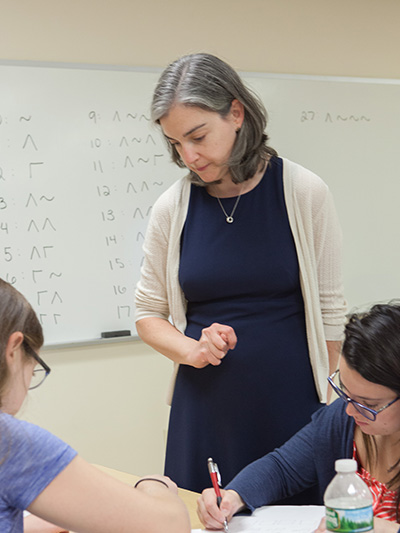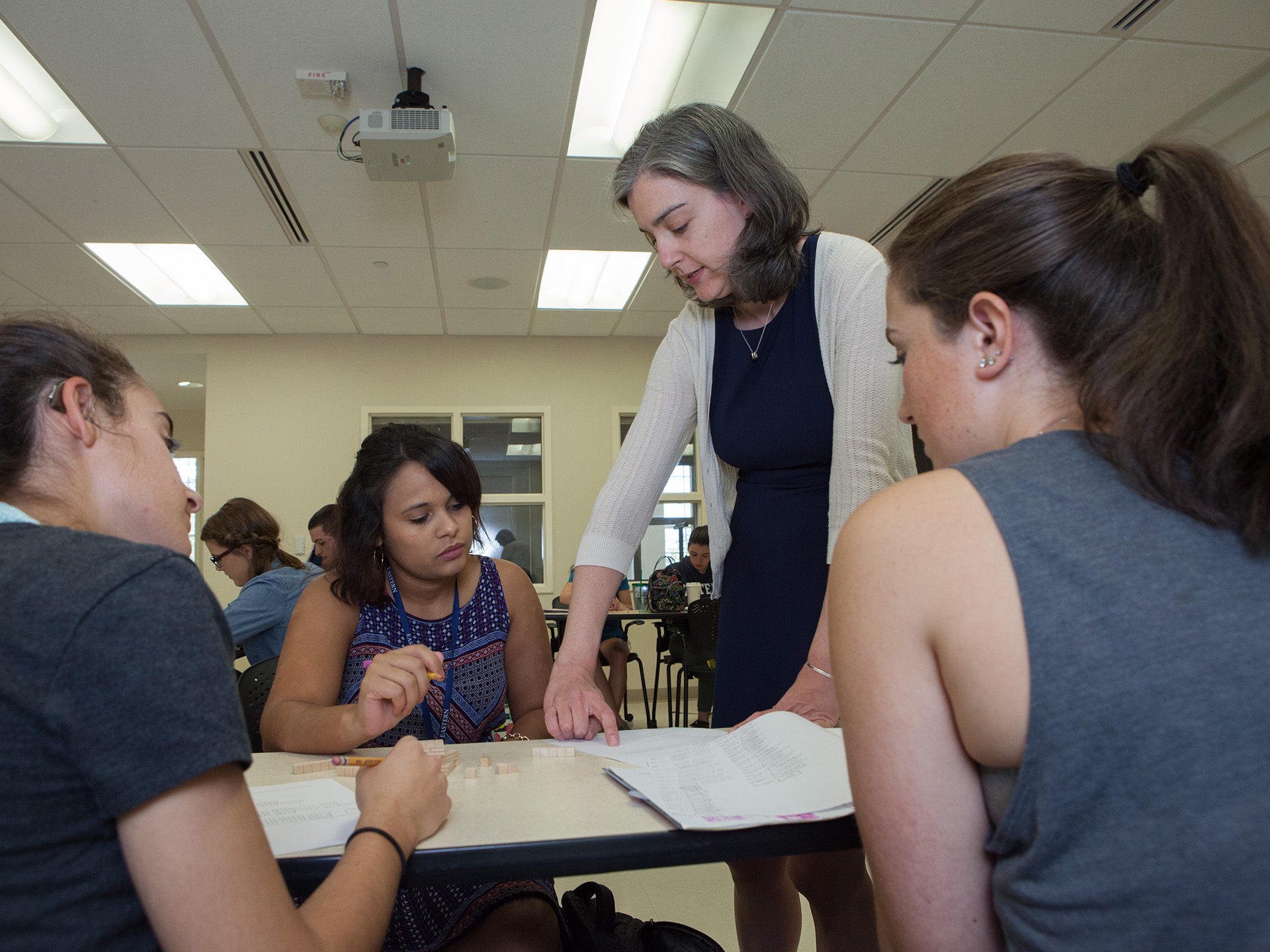- Apply
- Visit
- Request Info
- Give




 How did you come to Eastern?
How did you come to Eastern?“When I graduated from college I had no idea what I wanted to do. I liked math and I liked helping people learn math, so I taught high school for a bit. While I enjoyed teaching I wanted to try something else, so I worked in the publishing industry on high school and middle school math textbooks for a couple of years. I missed teaching and learning math, so I went back to school to get my Ph.D. in mathematics with the goal of teaching at the college level. I wanted to teach at a liberal arts institution committed to teaching and to stay in New England. I feel very lucky that when I graduated with my Ph.D. there was a position open at Eastern. As the public liberal arts university of Connecticut, Eastern was the perfect fit.”
“‘Discrete Structures’ because it is often the first place where students see that mathematics is more than just applying formulas or working with numbers. We talk about logic, sets, patterns and why statements are true and how to prove them. It is one of my favorites to teach because it is so new to students and opens up whole new ways to think about mathematics. It also helps that we get to talk a little bit about graph theory, which is my research area.”
“My research is in theoretical graph theory. The easiest way to describe what a graph is, is to think of a social network. The people in the network are what we call vertices and we say there is an edge between people if they are friends. In my research I study these objects from a theoretical point of view. So given a graph or a class of graphs what can we say about its properties? More specifically I study graph immersion problems. These problems look at graphs with some given properties and ask what are the connections in these graphs. Can we find a set of vertices that are all connected to each other by paths that don’t share any edges?”
“The students! I find the majority of Eastern students are eager to learn, hard-working and kind. Interactions with students inside and outside of the classroom are the best part of my job. Seeing how students grow over their four years and then hearing what they end up doing after Eastern is very rewarding.”
Interactions with students inside and outside of the classroom are the best part of my job. Seeing how students grow over their four years and then hearing what they end up doing after Eastern is very rewarding.

“I try to create an environment where students are comfortable asking questions of me and their peers. I talk about having a growth mindset and try to foster that mindset throughout the semester. Students are learning something new and that can be hard, but that’s a good thing. It’s ok, even important, to make mistakes when learning. When possible, I use inquiry-based learning techniques where students, with my guidance, ‘discover’ the material through activities and questions. I also often tell students that I don’t care if in 10 years they can’t remember how to do x, y, or z. What I want them to remember is that, when needed, they have the skills to figure it out again and that also means they have the skills to figure out new things too.”
“A major in mathematics doesn’t mean you have to be a teacher. For those that want to teach that is great and we need as many excellent math teachers as possible, but if that's not for them a major in mathematics can lead to many different careers. A background in mathematics teaches you to be a problem solver, someone who can think logically, and communicate clearly and concisely. These are skills that are important in any industry, so when looking for a job highlight these skills.”
“Don’t feel stuck on one path. It’s ok to try one career and then pivot to something else. Be open to learning new things and find something you enjoy doing.”